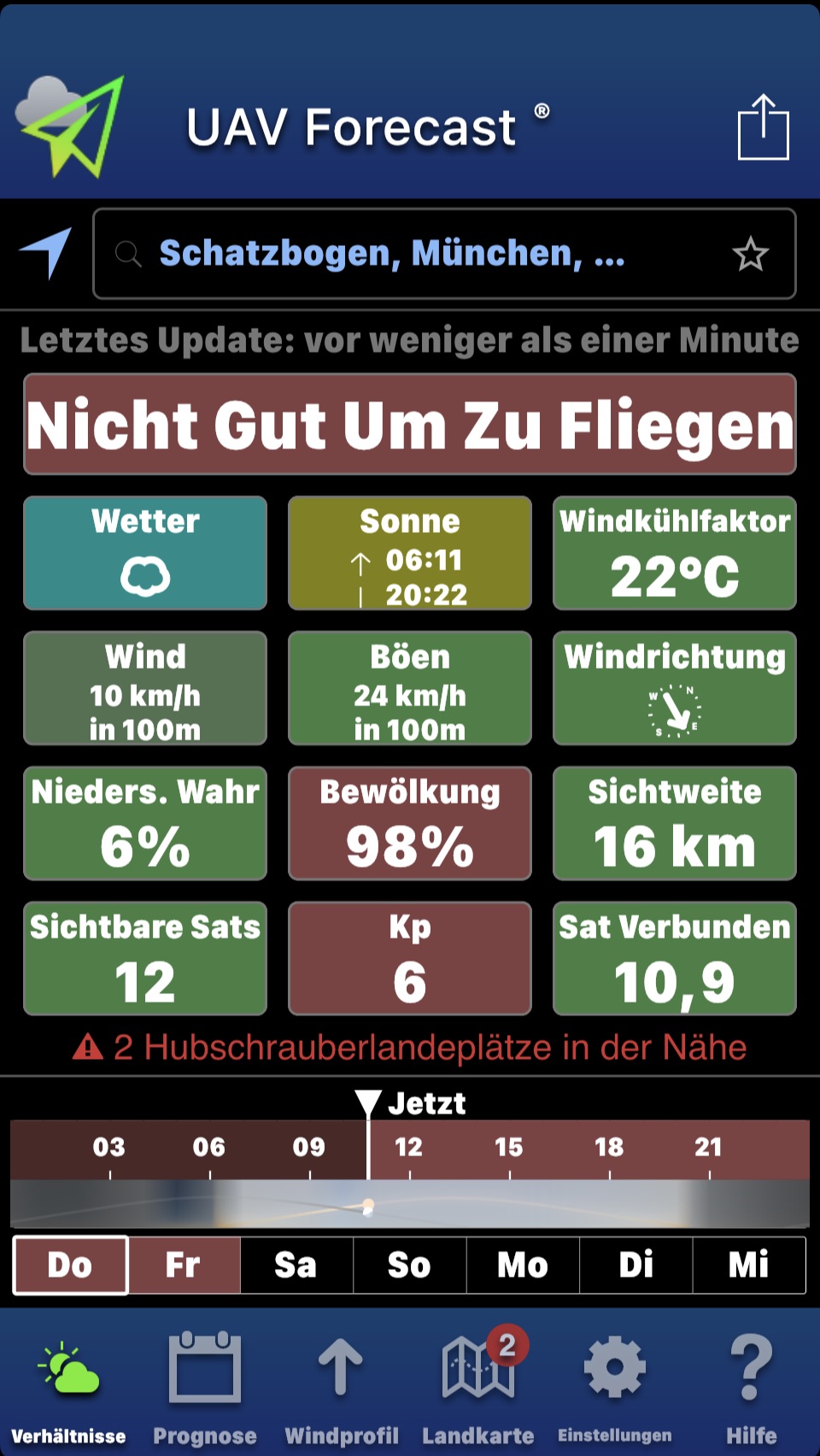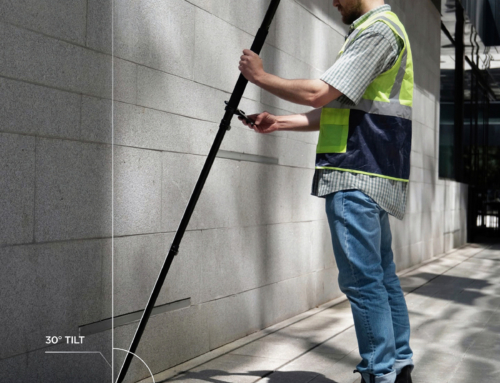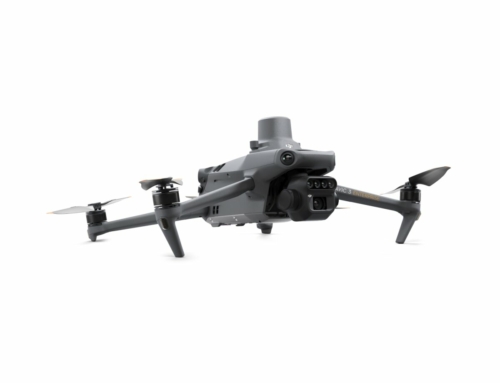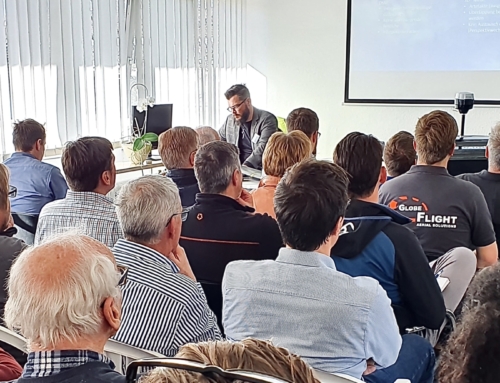Attention KP index - G3 class solar storm
Currently, a decent solar storm is “blows” the earth and causes the KP index to rise to a value of 6.
As trained long-distance pilots, we know that you should be critical of using a drone with a value >5. The reason for this is that at such values, the solar particle activity in near-Earth space is so strong that it "Surface charges can occur on satellite components, drag can increase on satellites in low Earth orbit, and corrections for pointing problems may be needed.” (Source: spaceweather.com)
In other words, our UAS could have problems with its flight/home coordinates. That's the theory.
Incidentally, it is always advisable to check the local weather conditions before using our drone. This also includes the KP index. To the right of this text is today's screenshot. UAV forecast is a free app that allows me to check the most important data before my flight. Here I can also find further information, we ICAO maps, forecasts etc. and can set my desired threshold values individually. But now it's about the KP Index (which stands for Planetary Index, as we know).
The KP index
What was that again? The Kp index describes the disruption of the earth's magnetic field by the solar wind. The faster the solar wind blows, the greater the turbulence. The index ranges from 0 for little activity to 9, meaning an intense geomagnetic storm is underway.
Exactly today, on 18.08.2022/3/6, a class GXNUMX solar storm hit the earth and caused a KP index of XNUMX.
We immediately unpacked various drones, GNSS receivers and antennas and intensively tested the effects in practice. This opportunity (fortunately) doesn't come around very often. Similar to the Richter scale used to measure the strength of earthquakes, there is also an index for solar storms: The KP index (planetary index) is the global standard for the energy input from the solar wind into the Earth system.
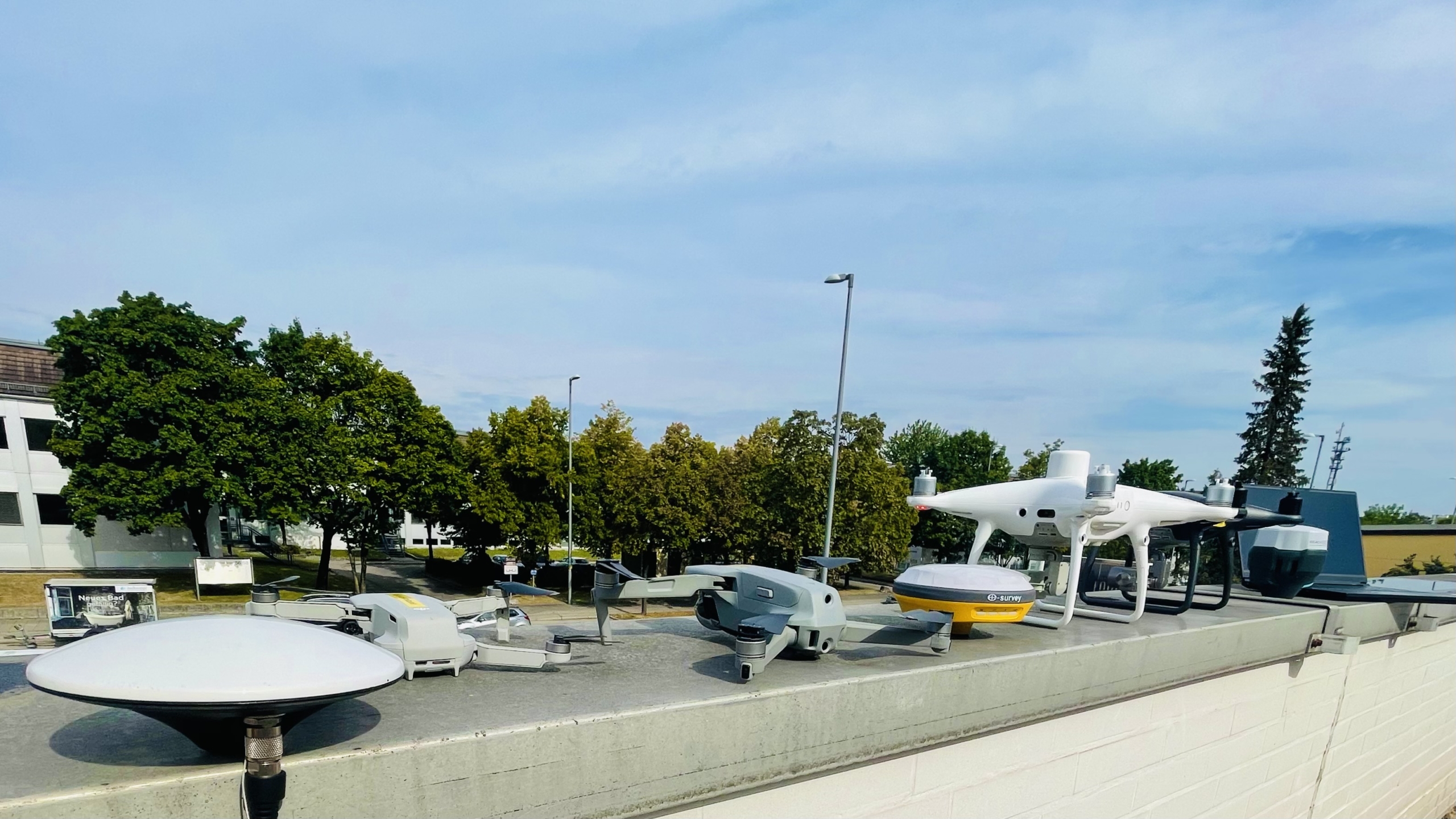
Our results at a glance:
- DJI Phantom 4 RTK: no fix possible (abortion after 30 minutes), test flight in GNSS mode without incident
- DJI Mavic Mini 1: Home coordinates after 10 minutes, apparent GNSS glitch about 30 cm after start (!)
- DJI Mavic Air2: Home coordinates after a few seconds, test flight without incident
- DJI Matrix M300: intermittent RTK failures, time-to-fix sometimes over 10 minutes, test flight in GNSS mode without incident
- Emlid Reach RS2: time-to-fix normal, apparently no errors in measured coordinates
- Emlid Reach M2 with Geoelectron Survey Antenna: time-to-fix about 5 minutes, apparently no errors in measured coordinates
- e Survey E100: time-to-fix (after 3 failed attempts) about 5 minutes, apparently no errors in measured coordinates
- Pixhawk 4 with Radiolink SE100: GNSS glitches by several meters (in the first 10 minutes), after that apparently no errors in the home coordinates
Of course, these results are not representative for the whole of Germany, but you can clearly see that the KP index can have an impact on the use of drones. Although we could not find any blatant problems in flight operations (except for glitches with Mini 1), using a drone with CP values over 5 needs to be carefully considered! Orientation problems with drones are no fun!
By the way: the “weather forecast” shows that the solar storm will steadily subside until tomorrow and then only has class 2. As a precaution, check the HP value if you are planning a flight for tomorrow.
We wish you always a good flight.
You have any questions to this topic? Then give us a call: 089 427422 0


